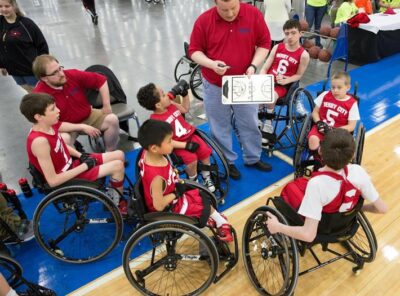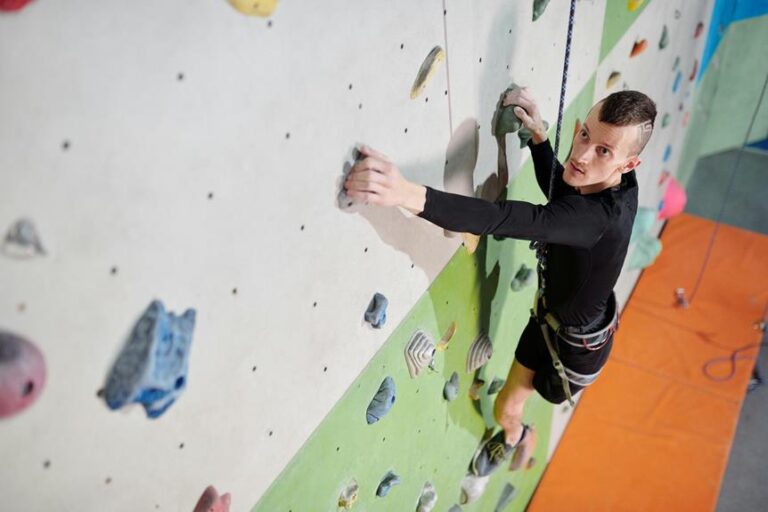7 Vertical Leap Testing Methods Compared
When comparing vertical leap testing methods, various approaches offer unique insights into athletes’ power and performance.
From traditional jump tests to innovative technologies like contact mats with sensors providing precise measurements and minimizing cheating risks, each method serves a specific purpose.
Handheld computers offer immediate data collection and analysis, while force plates investigate jump mechanics, aiding injury prevention and performance optimization.
Fiber optic techniques provide highly accurate biomechanical data during jumps, while multi-jump testing evaluates power production repeatedly for tailored training programs. Upper body power evaluation tools guarantee fair assessments and enhance accuracy.
By exploring these diverse methods, you will gain a thorough understanding of how to elevate your vertical leap testing game.
Key Takeaways
- Contact Mat With Sensors provides precise vertical jump height measurements without physical contact.
- Handheld Computers offer immediate and accurate jump height data for real-time analysis.
- Force Plates analyze jump mechanics through ground reaction forces, aiding in injury prevention.
- Fiber Optic Techniques offer highly accurate insights into jump mechanics and landing forces.
- Multi-Jump Testing evaluates power production ability and fatigue effects for tailored training programs.
Traditional Vertical Jump Tests
When evaluating traditional vertical jump tests, consider the evolution of assessment methods and the potential for inaccuracies due to measurement manipulation. The Sargent Jump Test, originating in 1921, was a foundational method developed by Dr. Dudley Sargent.
Advancing from this, the introduction of the Vertec with its moveable plastic tabs marked a significant improvement in jump testing technology. However, even with these advancements, there are risks of cheating in tests like the Vertec, where starting measurements for reach can be tampered with.
To combat this issue, entry-level contact mats provide a cost-effective and reliable alternative. By utilizing contact mats, you can conduct vertical jump tests with accurate results and eliminate biases associated with manual measurements.
Contact Mat With Sensors
How can contact mat with sensors revolutionize vertical jump testing methods?
Contact mat systems offer precise measurements of vertical jump height in smaller increments, enhancing the accuracy of assessments.
With this technology, you can measure upper body power without the need to strike a device, providing a thorough evaluation of overall jump performance.
Compared to traditional methods like the Vertec, contact mat systems minimize cheating, ensuring reliable results.
Coaches should remain vigilant against potential manipulation techniques such as kicking heels up during jumps, which can affect initial measurements.
Entry-level contact mats are cost-effective options that deliver accurate and versatile vertical jump testing in various environments.
Embrace the advancements in contact mat technology for a more efficient and insightful assessment of vertical leap capabilities.
Handheld Computers for Jump Measurement
Utilizing handheld computers in jump testing allows for immediate and precise measurements of jump height.
These devices provide real-time data collection during vertical jump assessments, ensuring accurate calculations through integrated sensors. By eliminating the need for manual calculations, the testing process becomes more efficient.
Data recorded by handheld computers can be easily saved and analyzed for tracking progress and performance improvements over time.
To illustrate the benefits further, the table below showcases a comparison between handheld computers and traditional methods for vertical jump measurement.
| Aspect | Handheld Computers | Traditional Methods |
|---|---|---|
| Accuracy | Offers precise measurements | May have variations in readings |
| Speed | Immediate data collection | Delay in obtaining results |
| Convenience | Streamlines testing process | Manual calculations required |
| Data Analysis | Easy to save and analyze data | Analysis may be time-consuming |
Force Plates for Jump Mechanics Analysis
Force plates play a vital role in understanding jump mechanics by measuring ground reaction forces during take-off and landing.
They offer precise data on variables like peak power, rate of force development, and ground contact time during vertical jumps.
These plates are essential for comprehending the force-time characteristics that contribute to vertical jump performance.
By utilizing force plates, athletes can assess the risk of injuries related to jumping and landing mechanics, ultimately enhancing performance and reducing the chance of unwanted setbacks.
Advanced technology integrated into force plates further improves the evaluation of jump performance, aiding in injury prevention and optimizing overall athletic capabilities.
Incorporating force plates into jump analysis not only provides valuable data but also enhances training strategies, helping individuals reach their maximum vertical jump potential.
Fiber Optic Techniques for Jump Assessment
Fiber optic techniques revolutionize jump evaluation by providing highly accurate and detailed insights into vertical jump mechanics. These techniques offer precise measurements of key variables like jump height and landing forces.
These advanced fiber optic systems capture real-time biomechanical data during jumps, enabling a thorough evaluation of performance.
By utilizing fiber optics in jump testing, you gain valuable information on take-off velocity, muscular fatigue, and reactive abilities all vital for evaluating injury risks and optimizing performance.
The detailed data collected through fiber optic technology not only enhances training strategies but also aids in injury prevention by highlighting areas for improvement.
With fiber optic techniques, you have a powerful tool at your disposal to explore deeply into the intricacies of jump mechanics, accessing a wealth of information for your benefit.
Multi-Jump Testing Approaches
To assess lower body power and explosiveness, multi-jump testing approaches involve performing multiple vertical jumps.
These methods offer a holistic view of an individual’s jumping ability by analyzing jump heights, consistency, and the effects of fatigue.
Here are some key points to take into account when utilizing multi-jump testing approaches:
- Evaluate jump heights across multiple repetitions.
- Analyze consistency in performance to identify strengths and weaknesses.
- Assess lower body power by observing the ability to produce power repeatedly.
- Tailor training programs based on the results to address specific weaknesses or imbalances in the lower body.
Upper Body Power Evaluation
When moving from multi-jump testing approaches to evaluating upper body power in vertical leap tests, consider utilizing contact mat technology for more accurate measurements and avoiding potential cheating methods associated with traditional jump tests like the Vertec.
Contact mats offer precise measurements of vertical jump height and contact time, providing a more reliable assessment of upper body power. Compared to traditional methods, contact mats enable coaches to detect any discrepancies or cheating tactics, ensuring fair evaluations.
Additionally, these entry-level contact mats are cost-effective tools that allow for smaller jump increments, enhancing the accuracy of the assessment.
By incorporating contact mat technology into your vertical leap testing, you can obtain trustworthy results and eliminate the uncertainties linked to traditional methods.
| Parameters | Contact Mat Technology | Traditional Methods |
|---|---|---|
| Vertical Jump Height | Accurate measurements | Potential for cheating |
| Contact Time | Precise evaluation | Manipulation risks |
Frequently Asked Questions
What Is the Most Accurate Way to Measure Vertical Jump?
When measuring vertical jump, the most accurate method depends on individual preference and available resources. Consider factors like ease of use, cost, and reliability. Experiment with different tools like Just Jump™ mat, Vertec™, and Vert™ devices to find what works best for you.
What Is the Gold Standard for Vertical Jump Test?
The gold standard for vertical jump testing is the force plate system. It directly measures the force during a jump, providing accurate data on jump height and velocity. Researchers consider it superior in validity and precision.
What Are the Three Methods of Calculating Vertical Jump Height?
In your journey to measure vertical jump height, you’ll encounter the Just Jump™ mat, Vertec™, and Vert™ device. Each offers insights into your explosive power. Embrace the thrill of discovering your leap potential.
Which Test Is Recommended to Reliably Measure Jump Height?
For reliable jump height measurements, you should consider using the Just Jump™ mat, Vertec™, or Vert™ devices. All three options offer consistent and accurate results, making them suitable choices for evaluating vertical leap effectively.
Conclusion
To sum up, when selecting a vertical leap testing method, consider factors such as accuracy, ease of use, and cost. Each method has its own strengths and limitations, so it’s important to choose the one that best fits your needs.
Whether you choose traditional jump tests or more advanced techniques like fiber optic assessment, the key is to consistently measure and track your progress to enhance your vertical leap effectively.
So, choose wisely, jump higher, and reach new heights in your athletic performance.














